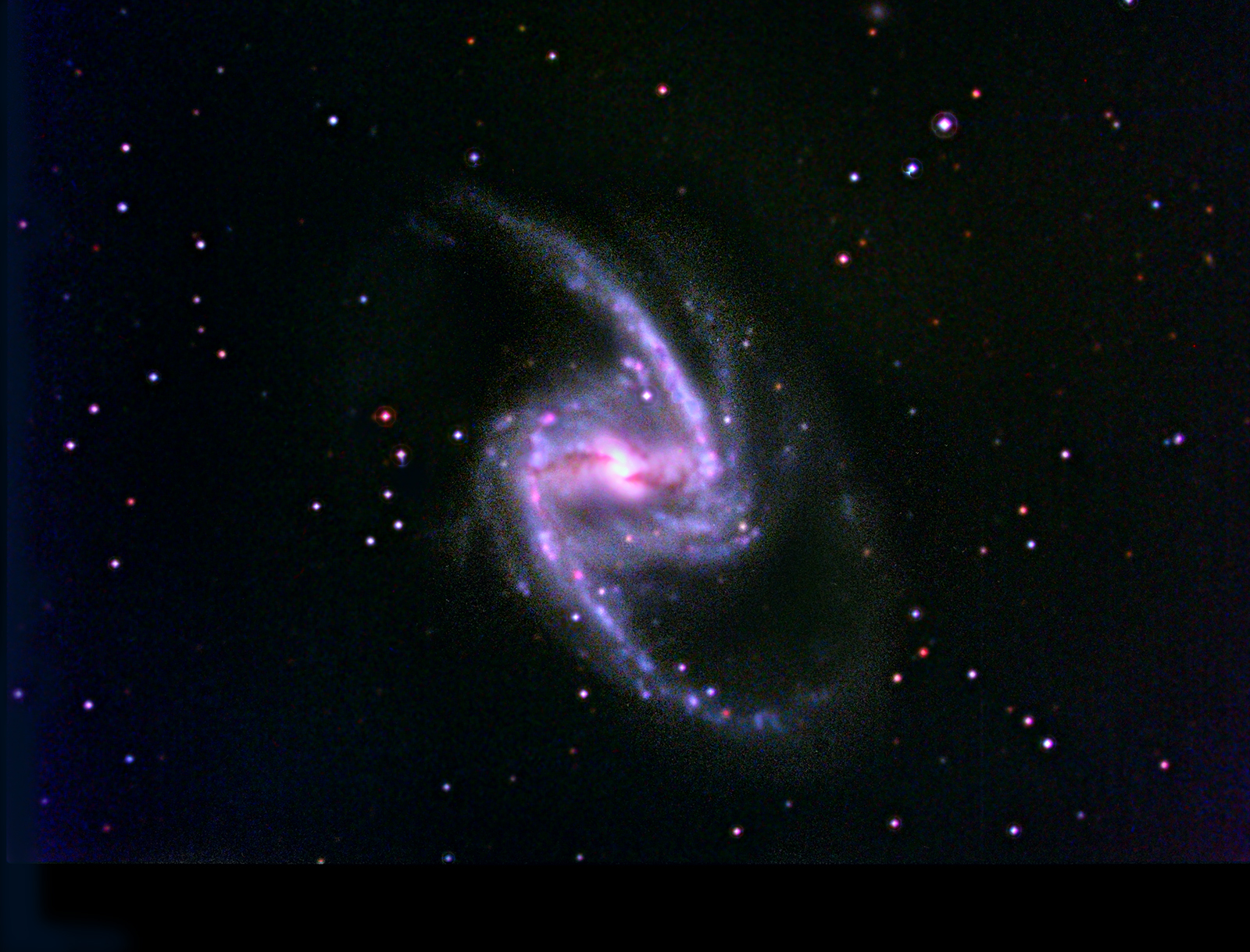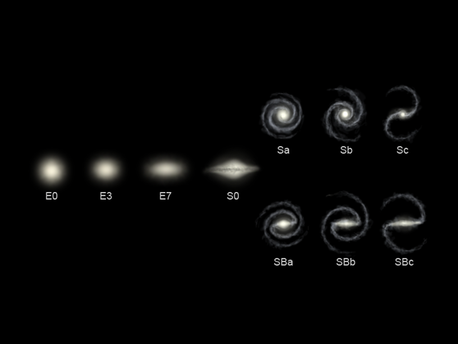
Ībout 100 million years after the Big Bang when pressure and temperature were right for something to happen. The First Stars Appeared Before There Were Galaxies. Either none formed at that time, or none were bright enough for their light so be seen at so great a distance. We can simulate this too, by trying to understand how the universe got into its current state, and following the effect of the gravity to see clusters of galaxies developing in the early universe.Īs we look further away, further back in time to within 900 million years of the Big Bang, these bright galaxies dwindle in number until there are none at all.
BARRED SPIRAL GALAXY SBA MOVIE
This short movie will take you on a journey out through the galaxies, based on the real data from the Sloan Survey. There are large volumes of space that are mostly empty, and filaments of clusters of galaxies throughout. Surveys of the universe have revealed a foamy pattern in the distribution of galaxies. Galaxies Distributed Through the Universe Make a Pattern Like Swiss Cheese You can pariticipate in exploring and classifying the galaxies they are finding by joining the Galaxy Zoo project. The Digital Sky Survey has been accumulating images and spectra continuously since 2000, and provides a picture of the distribution and types of galaxies from those nearby out to a redshift of z=6 for the distant quasars. There is an assortment of thousands of galaxies in at various stages of evolution in these images.ĭistant galaxies are also being studied from the ground, in methodical surveys covering wider spans of the sky. These images were assembled from hundreds of separated exposures with the Hubble Telescope pointing in one direction, creating a view to the visible horizon of the universe. The cluster's gravity acts as a lens, focusing the light from the bright yellow quasar and its super bright core into 4 bright blue-white star-like spots. Below we see a distant quasar, 10 billion light years (3 billion parsecs) away, through a cluster of galaxies "only" 7 billion light years away. They appear much like M87, only millions of times brighter at the central nucleus. Quasars are in the furthest reaches of the visible universe, created when the universe was compact and dense, the first throws of modern galaxies. Quasars are also called active galaxies because the black hole is still thrashing infalling matter into vortices that emit enormous amounts of energy and eject jets out thousands of light years into space. These points of light were extremely bright nuclei of galaxies fueled by supermassive black holes a billion times as massive as normal black holes! With better telescopes and cameras we may now see the fainter galaxies around these bright cores. Quasars were named "quasi-stellar" because they appeared as mysterious radio sources and bright points of light, star-like, but with unusual spectra.

See more at Hubble classification system.Sagittarius Dwarf galaxy Quasars Distant active galaxies in the very early Universe thought to be galaxies just beginning to form Compare elliptical galaxy irregular galaxy lenticular galaxy.

Astronomers believe that some elliptical galaxies containing hints of a bar and spiral might once have been barred spiral galaxies. Barred spiral galaxies are classified similarly to regular spirals, from SBa (large bulge, tightly wound arms) to SBc (smaller bulge, looser arms). About a third of spiral galaxies have this straight or lozenge-shaped bar of stars, gas, and dust extending out from the nucleus. ♦ A spiral galaxy whose central bulge has the shape of a bar from whose ends the spiral arms emanate is called a barred spiral galaxy. A spherical, relatively dust-free region known as a galactic halo surrounding a spiral galaxy may contain large amounts of dark matter. The majority of the mass of a spiral galaxy is contained in its bulge, made up mostly of old stars, while the arms are composed mostly of younger stars and large amounts of interstellar gas and dust. Spiral galaxies range from large bulges with tightly wound arms (classified as Sa) to small bulges with loosely wound arms (classified as Sc and in some cases Sd).

A galaxy consisting of a rotating flattened disk with an ellipsoidal central bulge from which extend a pattern of two or more luminous spiral arms.


 0 kommentar(er)
0 kommentar(er)
